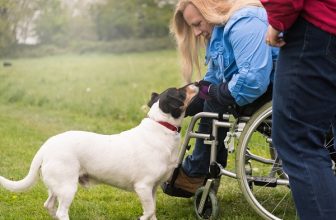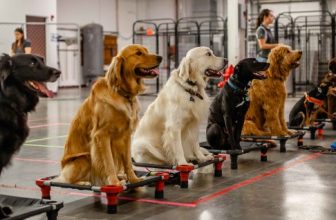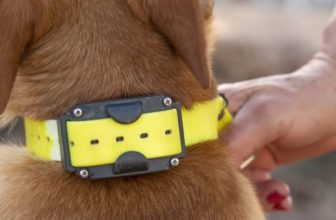
Discover the world of Therapy Dog Certification and Training. Learn how to certify and train your canine companion to provide comfort and support to those in need. Find answers to FAQs about therapy dogs and their impact.
Welcoming a furry friend into your life can bring immense joy and companionship. But did you know that dogs can go beyond being just pets? With proper training and certification, they can become therapy dogs, offering emotional support, comfort, and healing to people in various settings. In this comprehensive guide, we’ll delve into the world of Therapy Dog Certification and Training, uncovering the steps to turn your canine companion into a certified therapy dog and exploring their incredible impact on individuals and communities.
Unveiling the Path: Therapy Dog Certification and Training
Therapy Dog Certification and Training: What You Need to Know
Embarking on the journey to certify and train your dog as a therapy dog opens doors to a fulfilling and rewarding experience. It’s important to understand that therapy dogs are distinct from service dogs. While service dogs are trained to assist individuals with disabilities, therapy dogs provide comfort and emotional support to diverse groups, including those in hospitals, schools, and nursing homes.
The Power of Paws: Benefits of Therapy Dogs
Therapy dogs hold the power to uplift spirits and promote well-being. Through their presence, they can alleviate stress, reduce anxiety, and enhance emotional connections. Studies have shown that interacting with therapy dogs can lead to lowered blood pressure and increased levels of oxytocin, often referred to as the “love hormone.”
Fetching Success: Steps to Certify Your Therapy Dog
- Basic Obedience Training: Before diving into therapy training, your dog should master basic commands like sit, stay, and come. This foundation sets the stage for more advanced training.
- Socialization Skills: Therapy dogs need to be comfortable around different people and environments. Socialization helps them remain calm and composed during interactions.
- Therapy Dog Organizations: Research and choose a reputable therapy dog organization. These organizations offer training programs, evaluation processes, and guidelines to ensure your dog meets the necessary standards.
- Training and Evaluation: Enroll your dog in a therapy training program. Training typically involves exposure to various scenarios they might encounter during visits. After training, your dog will undergo an evaluation to assess their readiness for therapy work.
- Health Check: Regular veterinary check-ups are vital. Your dog should be up-to-date on vaccinations and free from any health issues that could hinder their ability to interact safely.
- Insurance and Liability: Some organizations might require liability insurance. This coverage protects both you and your dog in case of any unforeseen incidents during therapy visits.
Transformative Touch: The Impact of Therapy Dogs
Therapy dogs have a remarkable impact on the lives they touch. They bring smiles to hospital patients, offer comfort to students during exams, and provide companionship to the elderly in nursing homes. The non-judgmental and affectionate nature of dogs creates a soothing environment, fostering emotional connections and easing feelings of isolation.
Therapy Dog Certification and Training FAQs
Can any dog become a therapy dog?
Absolutely! Dogs of various breeds, sizes, and backgrounds can become therapy dogs. What matters most is their temperament, behavior, and willingness to interact positively with people.
Are there age restrictions for therapy dogs?
There’s no specific age limit. Both young and senior dogs can become therapy dogs as long as they meet the necessary criteria.
What types of places can therapy dogs visit?
Therapy dogs can visit a wide range of places, including hospitals, schools, rehabilitation centers, and disaster relief areas. Their presence provides comfort in diverse settings.
How long does it take to train a therapy dog?
The training duration varies based on the dog’s existing skills and the training program. It can take several months to a year to complete training and certification.
Can I train my dog at home or should I seek professional help?
While basic obedience training can be done at home, seeking professional guidance is recommended for therapy dog training. Professionals have the expertise to prepare your dog for real-world scenarios.
Is re-certification necessary?
Yes, therapy dogs usually require re-certification annually or biannually. This process ensures that they maintain their skills and remain suitable for therapy work.
Conclusion
In a world that often seems fast-paced and disconnected, therapy dogs bridge the gap with their unwavering presence and unconditional love. Through proper training and certification, these four-legged healers create meaningful connections and contribute to the emotional well-being of individuals across various settings. By embarking on the journey of Therapy Dog Certification and Training, you’re not only shaping your dog into a source of comfort but also becoming a part of a compassionate movement that makes a difference.




